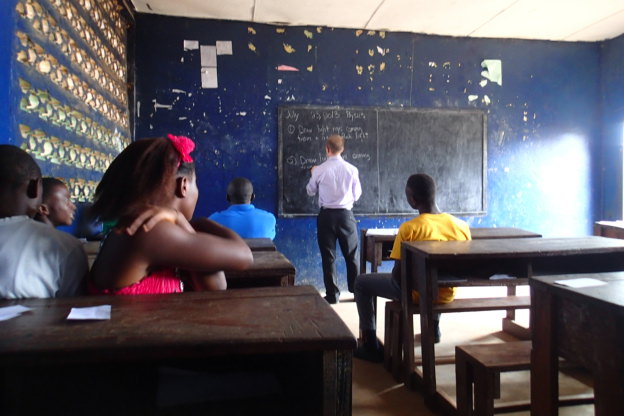teaching
my teaching philosophy

Good teaching, in my view, is a dynamic juggling act of cognitive scaffolding, performance art, and the logistics of balancing individual needs in a classroom. I like to structure my lessons as guided explorations of material that actively engage students’ problem solving skills. Instead of jumping straight into definitions, theory, or examples, I like to introduce new topics by asking students to consider situations already in their realm of personal experience that can be extended to motivate the development of whatever concept, framework or tool I am intending to teach.
For example, before introducing loops in a beginning programming class, I first assign practice that requires copy-and-pasting code to perform a repetitive task. I’ll ask students to consider how much effort it would be to take this same approach for something repeating thousands or even millions of times, and briefly brainstorm in small groups what sort of command we would need in the programming language in order to do this in an parsimonious way. This way, when I unveil the syntax of loop structures, students can readily understand the construct in the context of the problem that it solves. This also allows students to actively engage with the boundary of their understanding and ability in a way that encourages them to innovate even when they reach the leading edge of understanding in their field.
Thanks to my extensive experience tutoring 1-on-1 at the highschool and college level, adapting to individual needs comes naturally for me. When I am preparing lessons for larger groups, I can reflect back on the common challenges my past students have had, and structure lessons to preemptively address these issues before they happen. Still, in a classroom environment it can be difficult to get immediate feedback when students are stuck or lost. This is why I like to give frequent, brief, formative assessments that help me calibrate my teaching to the level of understanding in the classroom and ensure that a majority of the class is in an optimal “zone of proximal development”. It can also help me identify when students are beginning to fall behind, so I can make sure they get the extra support that they need.
Teaching mathematics as a Peace Corps Volunteer in West Africa instilled in me a deep appreciation for effective classroom management techniques, systems and routines. Due to over a decade of war and instability that disrupted the Liberian education system, students in my eighth and ninth grade classes ranged in age from 13 to 24 years old. With such a spread in maturity and ability levels, I had to build clear classroom systems and routines to ensure that students had clear expectations for their behavior. While such extreme circumstances are not usually encountered when teaching at the post-secondary level, from this experience I have learned to establish and clearly communicate expectations from the start of every new class that I teach. In addition to having clear and complete syllabi, I make sure to establish regular classroom routines that repeatedly remind students of my policies and expectations over the course of the semester.
My favorite classes to teach at the college level are entry-level mathematics, statistics, and programming classes. I find it invigorating to be able to start from first principles, so to speak, and build a strong foundation for my students’ academic trajectories. I love to be able to introduce basic concepts in a way that highlights how they fit together as building-blocks for the later, more advanced they will encounter in their careers. I see these entry-level classes as exciting places of self-discovery for students as they become aware of the enormous possibilities and life paths that their mastery of these basic skills can lead to. With that in mind, I weave concrete, relevant, real-world applications of the subject matter I am teaching into my lectures and assignments.